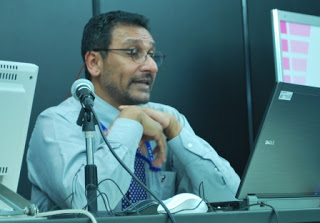
In the evening of October 21, Natural Justice attended a side event hosted by DIVERSITAS and the United Nations Environment Programme (UNEP) entitled “Beyond 2010: Defining Science-based Targets for Biodiversity, Ecosystem Services, and Human Wellbeing”. Speakers noted the many issues to address within the setting of biodiversity targets, including functional diversity, temporal and spatial scale, interdependence of multiple ecosystem services, and uncertainty. Recommendations included establishing priorities among the targets, using a systems approach to developing new targets, considering coherence between targets and other Multilateral Environmental Agreements and the Millennium Development Goals, and working with the future Intergovernmental Science-Policy Platform on Biodiversity and Ecosystem Services (IPBES).
Anantha Kumar Duraiappah (International Human Dimensions Programme on Global Environmental Change, IHDP) described the need to use a coupled systems approach to developing biodiversity targets and indicators for 2011-2020. He noted that the current targets are “in silos” and need to be interdependent and measured through indicators that can track causality. Drawing on lessons from a 2009 workshop to prepare Global Biodiversity Outlook 3, Damon Stanwell-Smith (UNEP World Conservation Monitoring Centre, WCMC) noted that there is a tension between scientific rigour and communication, that data underlying indicators must be transparently documented, that methods for assessing significance of change must be developed, and that there is currently no clear process for evaluating scientific rigour. He also said that targets must be built on other experience and stakeholder engagement and must be usable by policy makers and relevant to other processes. Discussion revolved around setting targets for ecosystems well-being, not just human well-being, and the need to develop information infrastructure for data collection and communication.
